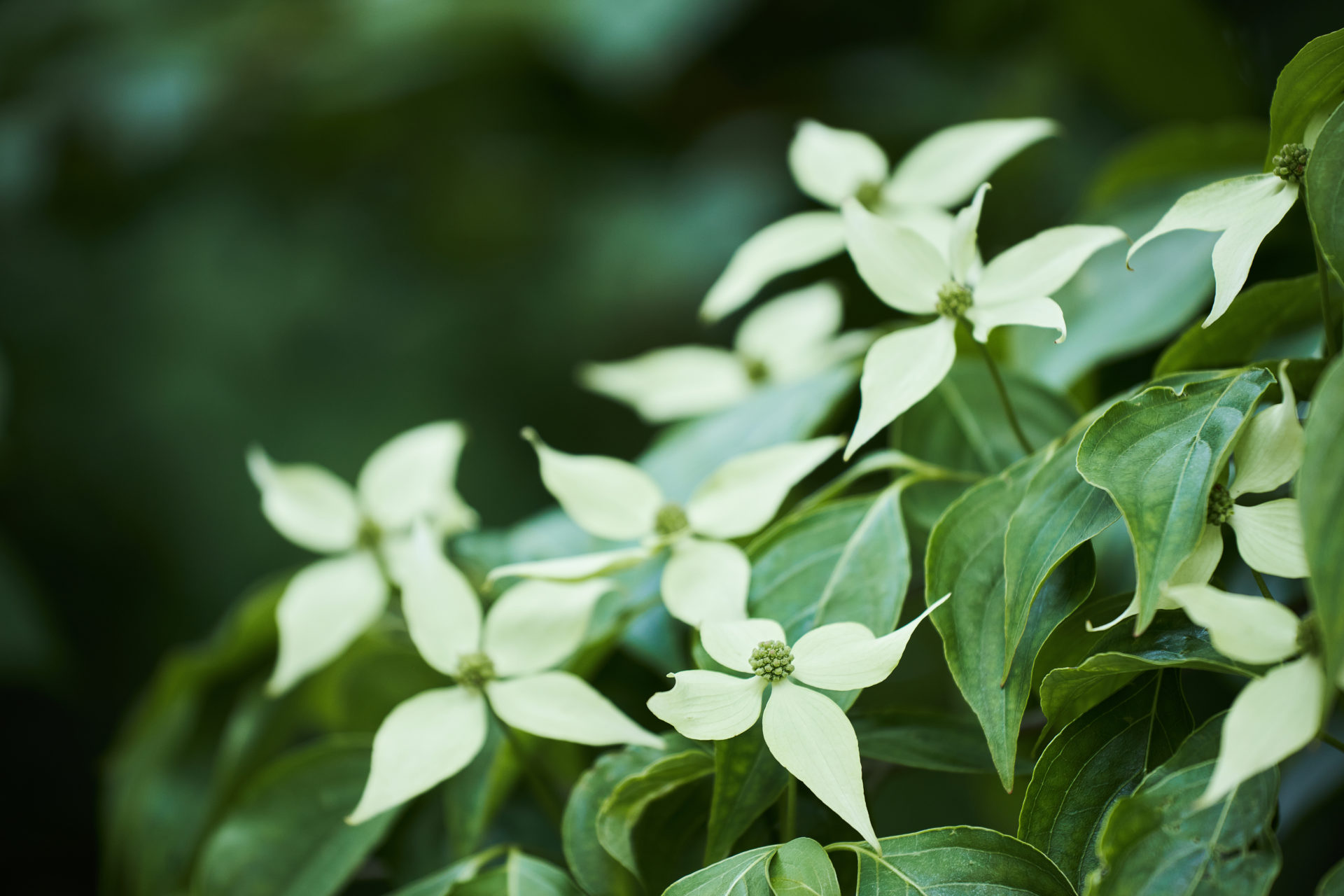
There are very few flowering understory trees as attractive as a dogwood tree.
Planting the Cornus kousa can do wonders for a landscape design by adding four-season interest, extending the bloom time in the spring, and attracting plenty of wildlife, all while having a form and traits that add to its versatility.
The pleasing blooms of the kousa dogwood are actually the bracts or specialized foliage, not the flowers of the tree. The bracts come in a star-shaped pattern of four leaves in various colors of white, pinks, and hybridized reds. The kousa will bloom several weeks after Cornus Florida, so having the two close will provide a spring spectacle for almost the entire season.
Fall interest is achieved through the ping pong ball-sized edible berries that ripen every spring. The kousa berries are a visual delight and offer a delicious treat to the wildlife who use them as a nearly endless source of food before winter. These berries will attract birds, deer, small mammals, and possibly neighbors in the know who are interested in wine and jelly making. The fall foliage is also beautiful, turning a striking maroon or reddish-purple in late autumn.
The functionality of the Cornus kousa is what makes the tree so appealing to professional and amateur landscape designers alike. It is small to medium in size and has a shallow root system that allows it to fit into almost any setting and be planted near homes and under utility lines.
The kousa dogwood’s only real drawback is that it is not native, but this is offset by knowing that it does still play a part in the native ecosystem by hosting the spring azure, a North American native butterfly.
Light
Kousa dogwoods prefer full sun but can suffer from sun scorch. If possible, place it in a location that will receive morning sun and afternoon shade.
Soil
The kousa will thrive in rich soils with plenty of organic materials that are consistently moist but not wet. If placed in soils with a high pH, the kousa may develop light foliage, a sure sign that the tree lacks soil acidity, which it prefers.
Water
Maintaining moisture around the tree is good practice. Though the Cornus kousa is not considered drought-tolerant, it is more resistant to drought than native flowering dogwood. If dry weather is consistent, supplemental watering may be necessary for young trees. Newly planted trees need to be given a thorough weekly watering until roots are established.
Temperature and Humidity
Trees with shallow root systems benefit from a few inches of mulch to moderate the soil temperature. The kousa is one of these shallow-rooted trees. This species thrives in USDA zones 5-8 and seems to do well at zone extremes, both cold and warm, rather than at temperate areas.
Fertilizer
Before fertilizing your kousa dogwood, it is a good idea to test your soil. Doing this will help you decide if your tree can benefit from a general fertilizer or if it needs a fertilizer that is aimed towards a specific nutrient.
by Les Engels (originally published as “How to Grow Kousa Dogwood (Cornus Kousa)” on the Spruce on 7/28/21)







